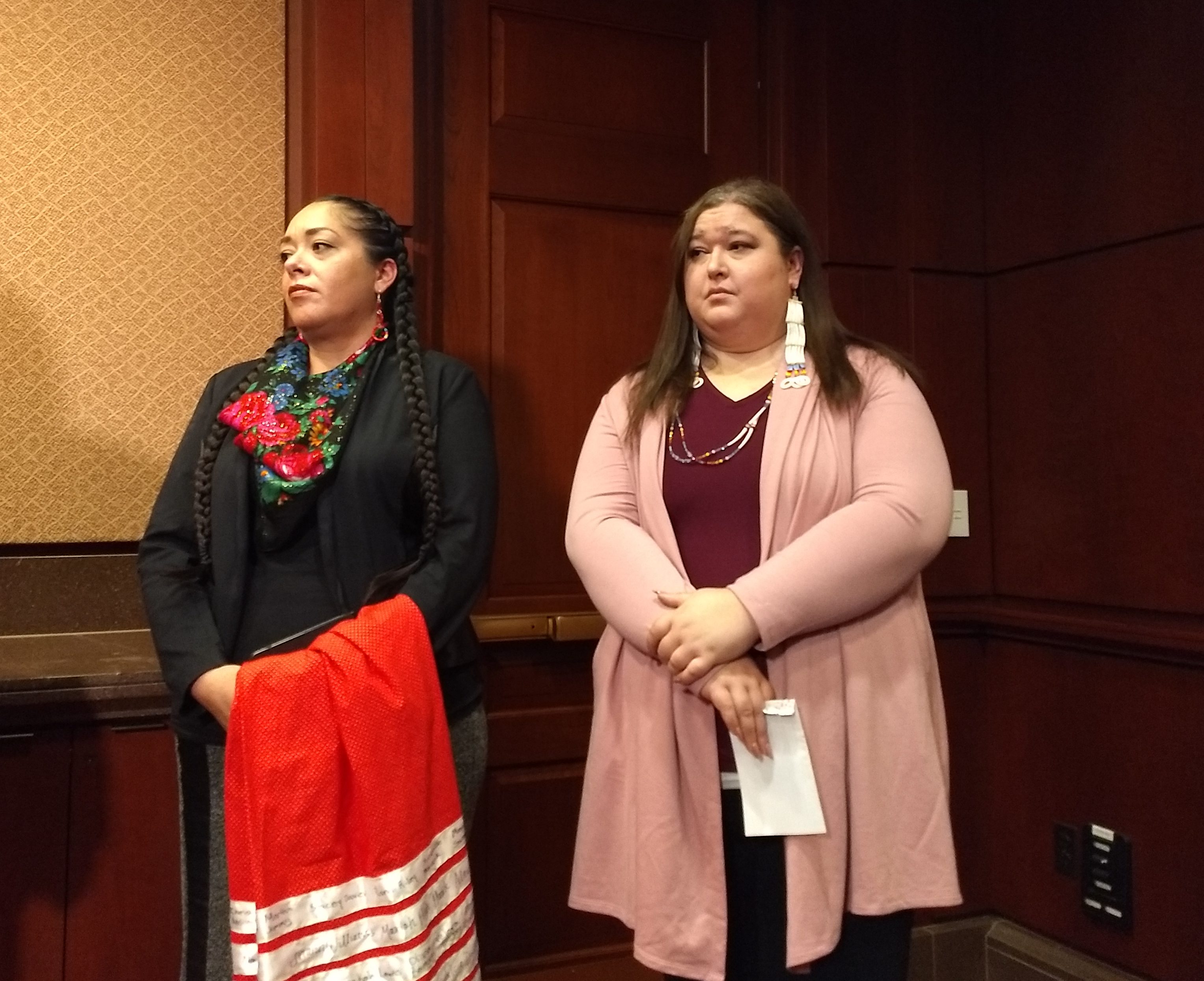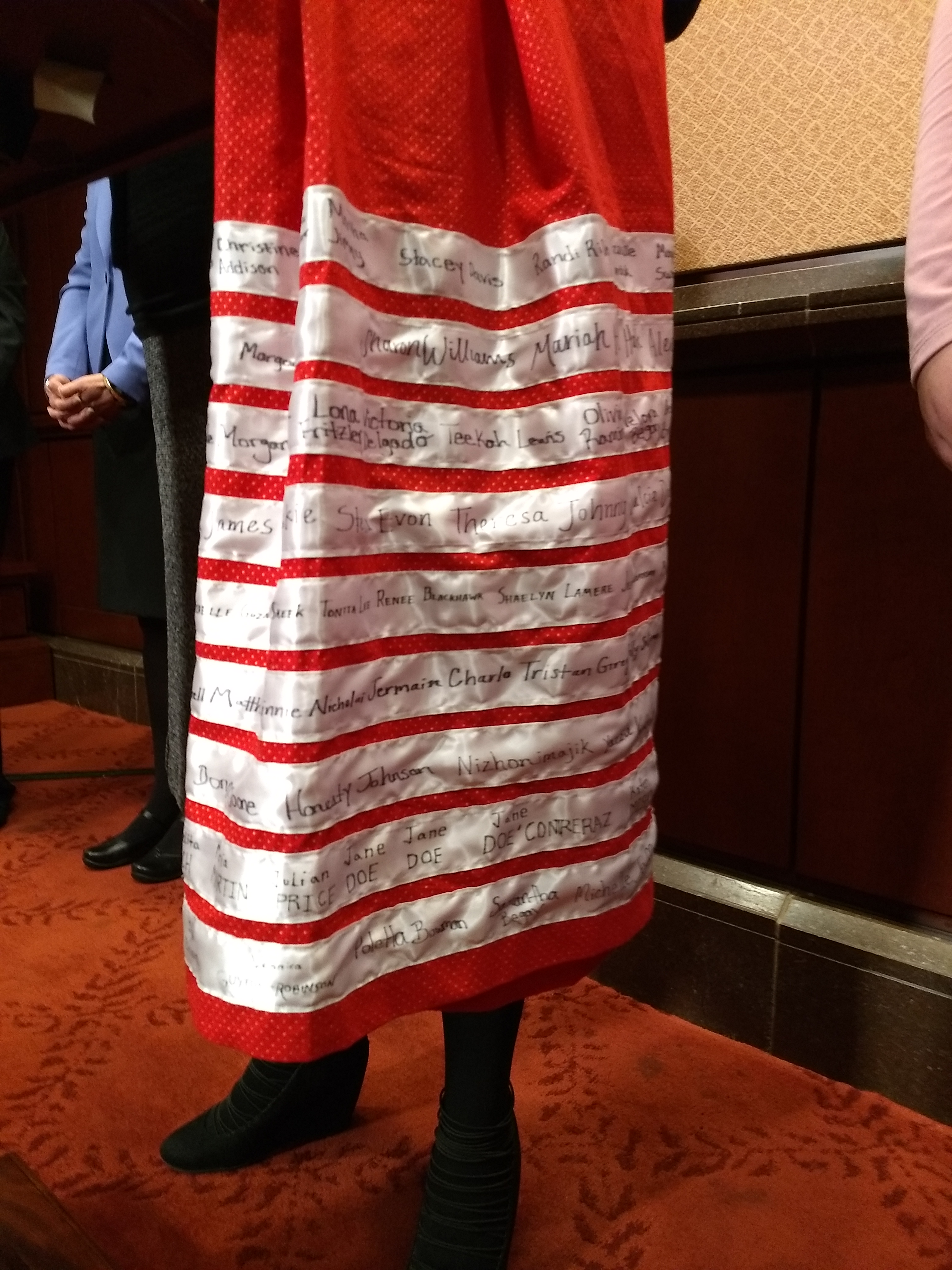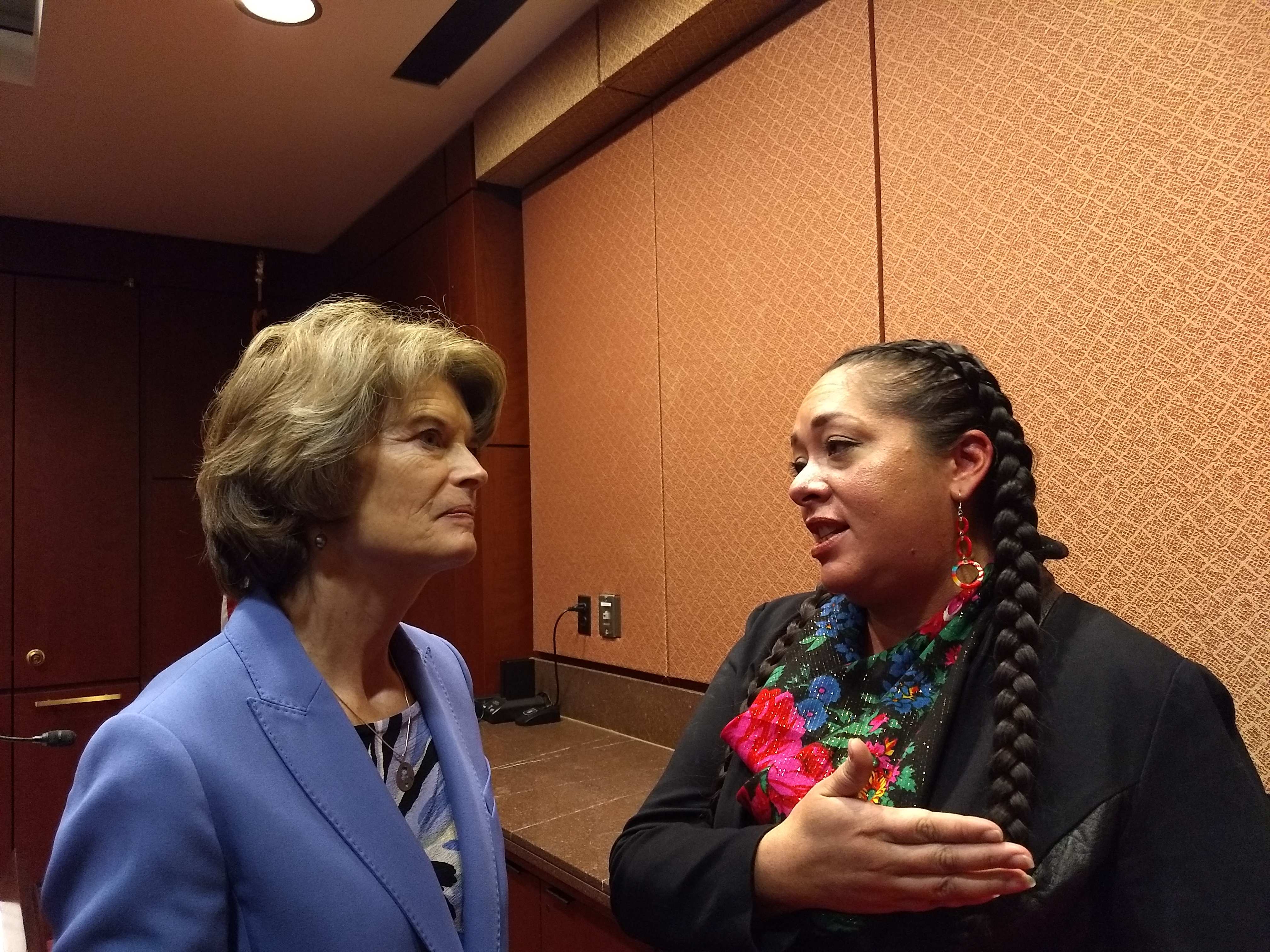Does the United States need an inquiry into murdered and missing Indigenous women and girls?
Anchorage had the third-highest number of missing and murdered indigenous women among 71 U.S. cities surveyed. The state of Alaska ranked fourth overall in the United States.

It started at Annita Lucchesi’s kitchen table four years ago.
She wanted to know how many Indigenous women and girls are murdered or go missing every year in the United States and Canada. It would seem like a simple enough question. But while different organizations do track these numbers, they are often looking at different data points, and many times cases slip between the cracks.
That’s when Lucchesi began keeping the database. She combed through police reports, news articles, social media, and personal connections with Indigenous communities in North America, and the MMIW Database was born.
So far, the database includes nearly 3,500 cases of missing and murdered Indigenous women, girls, and two-spirit people, a term used in some Indigenous North American communities for a third or fourth gender. The database includes information from as far back as 1900 and extends to the present day, “but the vast majority of the cases are post-1980,” Lucchesi told ArcticToday.
This year, Lucchesi’s kitchen-table work officially became a nonprofit called the Sovereign Bodies Institute, focused on “culturally-informed and community-engaged research” on gender and sexual violence against Indigenous people, as well as efforts to end the violence.
Recently, a breakthrough in the decades-old murder of an Alaska Native woman, Sophie Sergie, reemphasized the fact that Native women and girls face disproportionately high rates of violence and murder compared to their non-Native peers.
In January, Alaska Sen. Lisa Murkowski reintroduced Savanna’s Act, a law that would strengthen protections for Native women and girls in rural and tribal areas. However, it does little to help Indigenous peoples in urban areas.
Annita Lucchesi also recently coauthored a report with Abigail Echo-Hawk at the Urban Indian Health Institute (UIHI) on the high rates of violence against Indigenous women and girls in American cities. With 31 known cases, Anchorage had the third-highest among the cities surveyed; the state of Alaska ranked fourth overall in the United States.
Both authors spoke at an event on Capitol Hill last November to introduce the report.
“No one is looking for our women, and they are dying,” Echo-Hawk said.
She highlighted the gaps in the data on missing and murdered Indigenous people: “We know there are not hundreds, there are thousands,” she said.
She told ArcticToday that she expected a lack of data, but she didn’t expect such huge gaps in that data or other barriers, like paying for police records. The UIHI team submitted 72 requests for public records from 71 American cities and the state of Alaska.
“But utilizing public records requests is meaningless if the data isn’t there,” she said. “The actual data we were requesting often wasn’t even being captured.”
For example, if the police or medical staff in Fargo, North Dakota, don’t capture someone’s ethnicity, it defaults to white in the records. “That skews their data,” Echo-Hawk said — not just for Native peoples but other communities of color as well.
“We cannot advocate for funding, for intervention, for prevention, when people are telling us that our women aren’t missing and aren’t murdered when we know that they are,” she said.
The data are also important for understanding other phenomenon that may strike Native communities harder, like diabetes and heart disease, she said.
“It allows us to understand where we need to make decisions about policy and programming,” she said. “It also helps us understand where people are doing really well.”
“Ignoring us within the data is being complicit in the genocide of American Indian and Alaska Native people,” Echo-Hawk said. “Because when you eliminate us in the data, you’ve eliminated us from the programs, the policy, the intervention and the efforts.”
At the November event on the Hill, Echo-Hawk said, “We aren’t calling for a hearing. We are demanding a hearing.”
Does that mean the United States needs an inquiry into its missing and murdered Indigenous women? She nodded her head emphatically.
“Absolutely,” she said. “For many, many years, voices have been silenced. Communities have not been able to express their grief, express their loss — and also to understand and demand what justice looks like for them.”
An inquiry, she said, would elevate Native voices and give them long needed visibility. And for her, it all starts with the data — tracking, with real, hard numbers, the disproportionate rate of violence against Native women and girls.
Sen. Murkowski also spoke at the November launch of the report, and she also mentioned Canada’s MMIWG inquiry — which cost more than $54 million, she said.
“How much have we invested here? About zero. About zero. We have more than a duty to act on this.”
In conversation with Echo-Hawk and Lucchesi afterward, Murkowski said, “You are beginning a significant conversation with numbers that have been in the shadows for far, far too long.”
“We need to not only get the data that’s out there,” Murkowski said, “we need to be addressing the root of the problem — and that takes money.” The funds would go toward investigations, data collection, adequate law enforcement and more.
“We have a lot of work to do there, and it’s going to take dollars,” Murkowski said.
Kendra Kloster, executive director of Native People’s Action in Anchorage, told ArcticToday that collecting the data is an important step toward addressing violence against Indigenous peoples.
“Legislators want to see the data,” she said. “If you don’t show it to them, they say, ‘Do we really need to address this now?’”
Yet, Kloster said, “we don’t even have information to say how big this problem is.”
The report from UIHI is a good start, she said, for identifying the problems — not just the violence itself but also the gaps in data collection, the misidentification of Native peoples in official records and the difficulties researchers encountered in collecting records.
Kloster, who is Tlingit, said an MMIWG inquiry would begin addressing these issues from the federal level down, mandating that law enforcement and other officials collect data and open investigations.
“To me this is a crisis. This is something we need to be addressing on federal, state and community levels,” she said.
But some say an official inquiry may not be the best route to address the problem.
Madeleine Redfern is the mayor of Iqaluit, Nunavut, where one of the Canadian MMIWG inquiry hearings was held.
She was cautious on the question of a U.S. inquiry, though. “Is there a grassroots call for such an inquiry?” she asked. If the call is coming from within the community and would include Indigenous leadership, she said, it could help. And if the inquiry is done well, it can make important recommendations that can lead to change, she said.
But she pointed to problems with Canada’s inquiry, from the scope of the mandate to the composition of the commission and its communication with the community.
“Are the families going to be treated with respect?” Redfern asked. “Are they going to be sensationalized or attacked — find their family member under the microscope and possibly attacked for getting murdered or going missing?”
In addition to the lack of sensitivity toward those who testified about their murdered and missing loved ones, Canada’s inquiry was plagued with charges of inadequacy and resignations by top officials in its two years.
In July 2017, the Assembly of First Nations requested a reset and reevaluation of the inquiry. A more recent report released by the Native Women’s Association of Canada found that “an opportunity has been missed to communicate the realities of violence against indigenous women and solutions to end it.”
Marion Buller, the chief commissioner of the inquiry, has said that it would only result in a “superficial analysis of the obvious” without additional resources.
Redfern also pointed to the difficulty of addressing cases of murdered and missing Indigenous women and girls on the national level.
“It’s very tough to make something pan-Indigenous when there are so many different types of cultures and languages,” she said.
Annita Lucchesi said that there are valuable lessons to be learned from the Canadian inquiry.
“Although the inquiry was a nice idea in theory, the execution went horribly wrong,” she said. “Do we need another one of those here? No, because it didn’t work there, either.”
“Do we need something similar that better accounts for Indigenous ways of knowing and better supports families?” she continued. “Maybe.”
But, she points out, that’s essentially what she’s already doing with the MMIW database and the recently launched Sovereign Bodies Institute.
“How we continue to grow is creating a space for families and communities to share their stories, and to feel like they’re being heard, and to access resources,” she said. “We’re already doing that.”
Perhaps the biggest failure of the Canadian inquiry, she said, is that people may have felt it was their one shot — their one opportunity to tell their story and finally be heard.
“There’s never just one opportunity,” she said. “Any effort to help those families heal or come to some sense of closure, would empower them to speak. That’s what the database seems to do.”
While an official inquiry might establish better data collection and law-enforcement protocols, it will only be successful if the Indigenous community is involved from the beginning, she said.
“Any kind of movement forward on this issue has to prioritize Indigenous leadership,” Lucchesi said.


